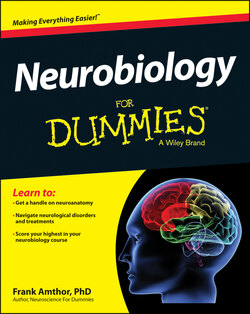Читать книгу Neurobiology For Dummies - Frank Amthor - Страница 50
Greeting chromosomes and genes
ОглавлениеGenes are made of DNA (DNA stands for deoxyribonucleic acid), a nucleic acid that is composed of long sequences of nucleotides. DNA exists in the form of a double helix that is tightly coiled within the nucleus of the cell.Only four types of nucleotides make DNA:
Adenine (A)
Cytosine (C)
Guanine (G)
Thymine (T)
Mitotic cell division or mitosis is the process in which chromosomes are duplicated, segregated, and allocated so that each daughter cell has a complete set of chromosomes derived from the parent. Eukaryotic organisms (those whose cells have a nucleus), such as animals and plants, have most of their DNA inside the cell nucleus — although some DNA exists in organelles such as mitochondria. Prokaryotic organisms (those whose cells generally do not have a nucleus), such as bacteria, have DNA in their cytoplasm.
Each organism has a unique sequence of DNA. The only exception: identical twins, although even identical twins may differ slightly because of mutations accrued during their development. Humans have 23 pairs of chromosomes that make up a total of over 3 million nucleotides.
The total difference in the DNA sequence between two humans is less than 0.5 percent, whereas the difference between a human and a chimpanzee is about 2 percent.
